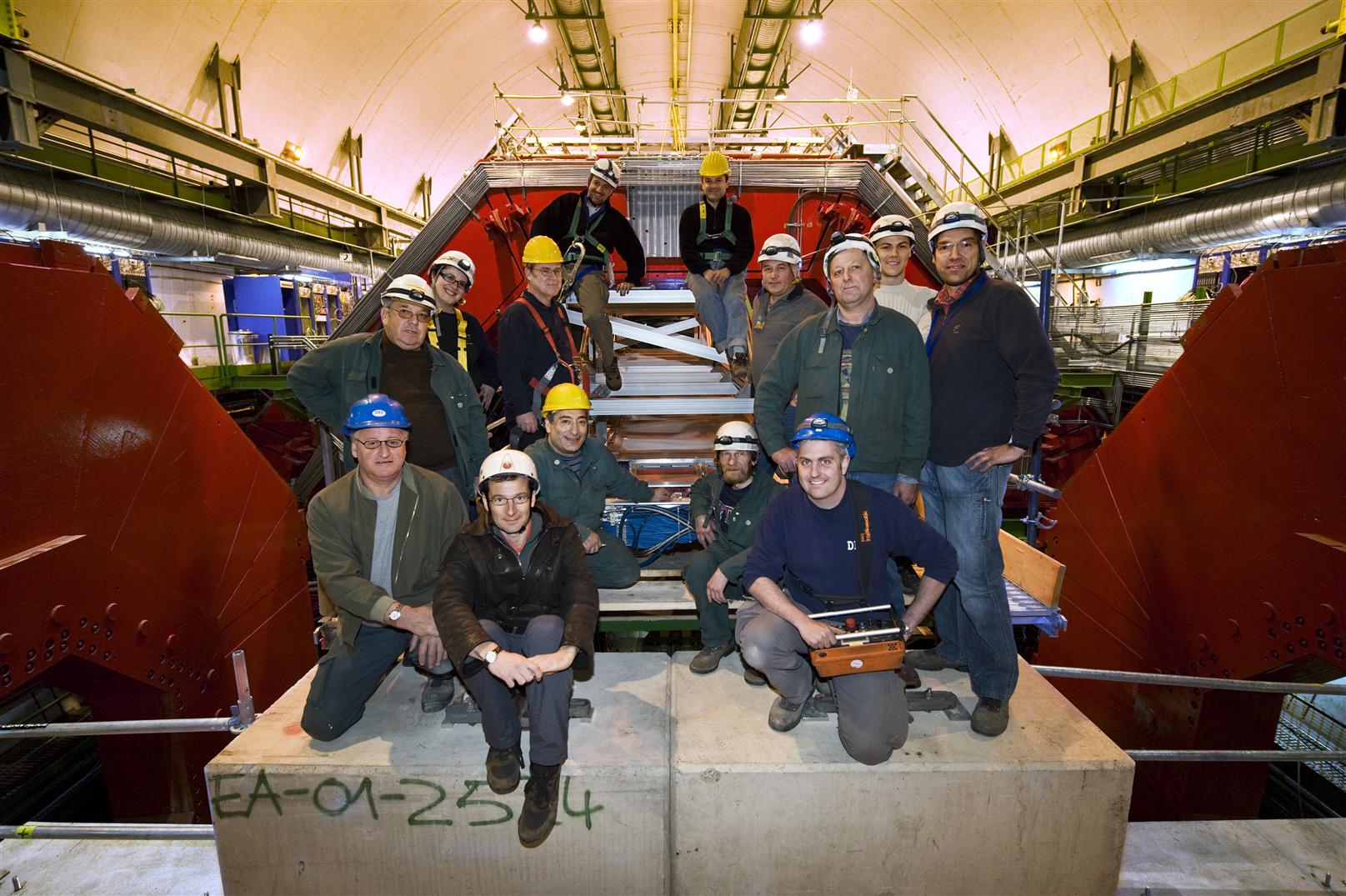Time flies at ALICE
The installation of ALICE’s Time of Flight (TOF) detector was completed in the last week of April after the last module was put into place in the cavern.
In trying to discover the mysteries of the beginning of the Universe, being able to tell the time is all important, as ALICE’s recently installed TOF detector demonstrates. To the tiniest fraction of a second it times how long it takes particles to travel from the interaction point at the beam line to the surface of the detector, thus helping to identify them.
Lying 3.7 metres from the beam line, inside ALICE’s huge magnet, the cylindrical TOF detector has been developed by a collaboration of scientists from the University and INFN of Bologna and the University of Salerno, Italy, the Institute of Theoretical Physics, Moscow, and Kangnung National University, Korea. Over the past 10 years the TOF team has seen the detector through its conception, design, production, testing and finally its installation in the cavern.
The total surface of the TOF detector is 150m2, divided up into 18 SuperModules, each of which is further divided into 5 modules. The whole area is covered with 1638 Mulitgap Resistive Plate Chamber (MRPC) strips, which were all made at the INFN laboratory in Bologna and are the basis of the detector’s technology (see box for more information).
"I’ve been working on this project since I did my undergraduate studies at CERN eight years ago," says Gilda Scioli, a physicist at ALICE. "The team started the assembly and installation of the modules in Summer 2006 and finished at the end of April this year. We’ve been getting faster and faster at installing the modules. It used to take us a couple of days, but the last one was installed in only a few hours," she explains.
Operating alongside the Time Projection Chamber (TPC), which lies inside the cylinder formed by the TOF detector in the experiment, the TOF detector identifies charged particles (pions, kaons or protons) produced by heavy-ion collisions by measuring the difference between time zero (T0) at the interaction point and the time when the particle reaches the TOF detector, as different particles travel at different speeds. By matching this data with the reconstruction of the particles’ track through the TPC the products of the beam line collisions can be identified.
Each module was carefully checked for performance in Building 167 using a ‘cosmic ray telescope’ before being assembled in the SuperModules. Now all that remains for the TOF team to do is re-test the modules to check that there has been no damage after installation and connect and commission the electronics inside the experiment cavern. The clock is ticking…
How do Multigap Resistive Plate Chamber (MRPC) strips work?
Gilda Scioli explains how the MRPC strips detect particles: "In each strip there are two electrodes and between them there are a series of glass sheets. Between one glass sheet and the other is gas. When a charged particle travels through the MRPC it ionises the gas and causes an avalanche of electrons and positive ions. Because there is an electric field in the detector the electrons go to the anode and the positive ions to the cathode, creating an electric signal which is collected on circuit boards." The time resolution of the TOF detector is about 100 picoseconds (1 picosecond is one trillionth of a second).



